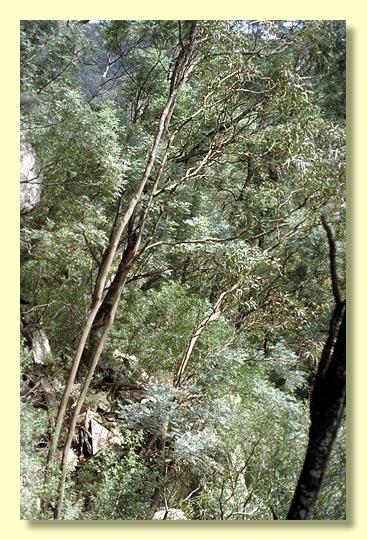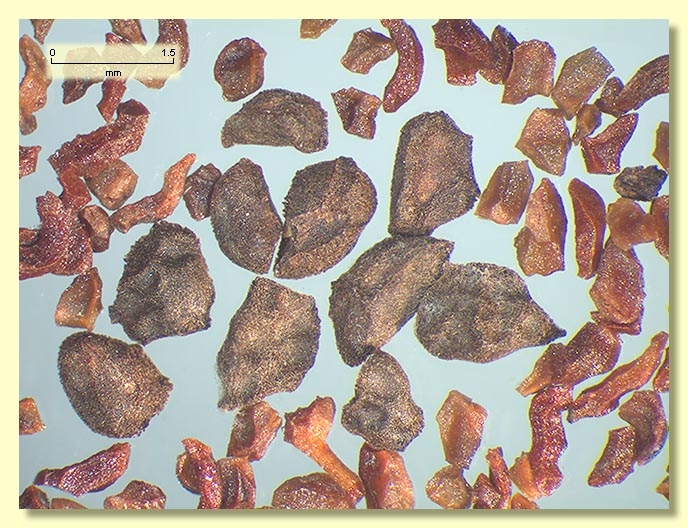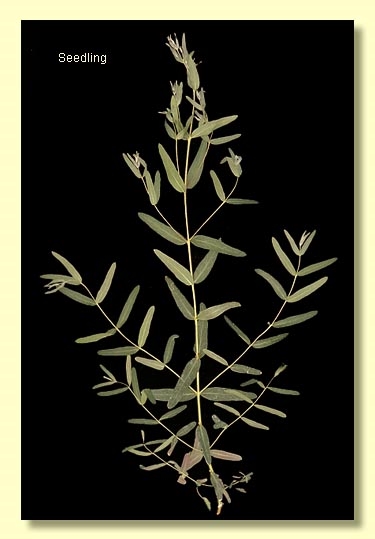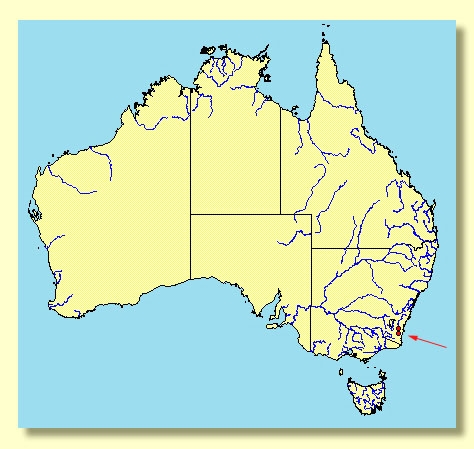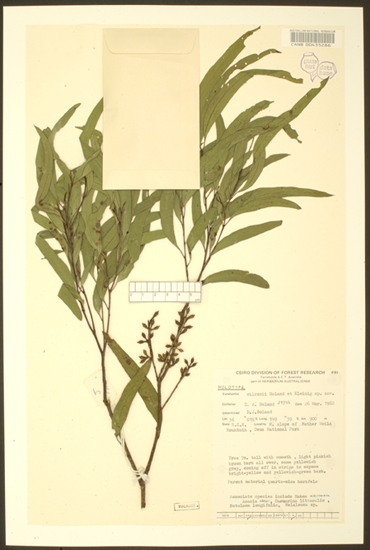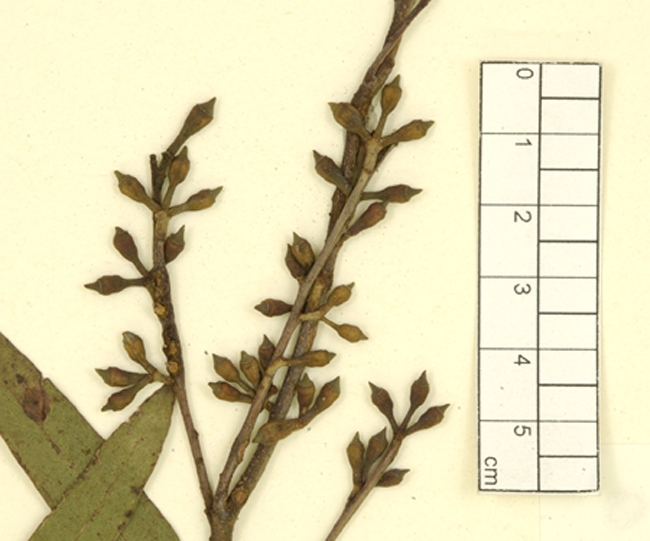Euclid - Online edition
Eucalyptus wilcoxii
Eucalyptus | Symphyomyrtus | Maidenaria | Euryotae | Saxicola
T: New South Wales: Mother Woila Mountain, Deua National Park, 26 Mar. 1982, D.J.Boland J1714; holo: CANB; iso: NSW, K.
Bark smooth throughout, pinkish brown to green, shedding in ribbons.
Juvenile growth (coppice or field seedlings to 50 cm): stems rounded or square in cross-section, usually glaucous, warty; juvenile leaves sessile to shortly petiolate, opposite for 5–10 nodes then alternate, narrowly elliptical, 2.5–6 cm long, 0.5–1.8 cm wide, base tapering to petiole, discolorous, bluish green to glaucous.
Adult leaves alternate, petiole 0.5–1.7 cm long; blade lanceolate to falcate, 5.5–15.5 cm long, 0.7–2.2 cm wide, base tapering to petiole, concolorous, dull, green to blue-green, side-veins usually greater than 45° to midrib, densely reticulate, intramarginal vein parallel to and just within margin, oil glands mostly island.
Inflorescence axillary unbranched, peduncles 0.2–0.6 cm long, buds 3 per umbel, pedicels 0.2–0.3 cm long. Mature buds cylindrical to ovoid, ca 0.6 cm long, ca 0.4 cm wide, green or slightly waxy, hypanthium much longer than operculum and with a conspicuous ridge at the join, scar present, operculum prominently beaked, stamens inflexed or irregularly flexed, anthers cuboid to oblong, versatile, dorsifixed, dehiscing by longitudinal slits (non-confluent), style long, stigma blunt, locules 3 or 4, the placentae each with 4 vertical ovule rows. Flowers white.
Fruit on pedicels 0.1–0.2 cm long, cup-shaped or campanulate, 0.4–0.6 cm long, 0.5–0.8 cm wide, disc from slightly raised to slightly descending, valves 3 or 4, near rim level or just exserted.
Seeds dark brown to black, 1.7–2.2 mm long, ovoid or flattened-ovoid, often pointed at one end, lacunose, dorsal surface shallowly pitted, hilum ventral.
Cultivated seedlings (measured at ca node 10): cotyledons bilobed; stems usually square in cross-section, warty; leaves sessile and opposite for ca 10–15+ nodes then becoming sub-opposite to alternate, usually lanceolate, 3.5–7 cm long, 0.5–2 cm wide, base amplexicaul to tapering, margin entire, apex rounded to pointed, concolorous, dull, green to grey-green.
Flowering has been recorded in March.
A mallee or small tree known only from a few localities from south-eastern New South Wales, on Mother Woila Mountain, Brogo Creek, Galoon Creek and in Wadbilliga National Park.E. wilcoxii is distinguished by its smooth bark, dull, bluish green leaves, buds in threes, and campanulate fruit. It is related to E. baeuerlenii, which has broader green adult leaves and occurs further north.
Eucalyptus wilcoxii belongs in Eucalyptus subgenus Symphyomyrtus section Maidenaria, a large group of species more or less restricted to south-eastern Australia, characterised by bilobed cotyledons, simple axillary inflorescences, buds initially with two opercula, stamens with versatile anthers and flattened seeds with a ventral hilum. Within this section, E. wilcoxii, with E. baeuerlenii, forms series Saxicola having smooth bark, juvenile leaves opposite for up to 10 nodes, buds in threes, and montane rocky habitat.

